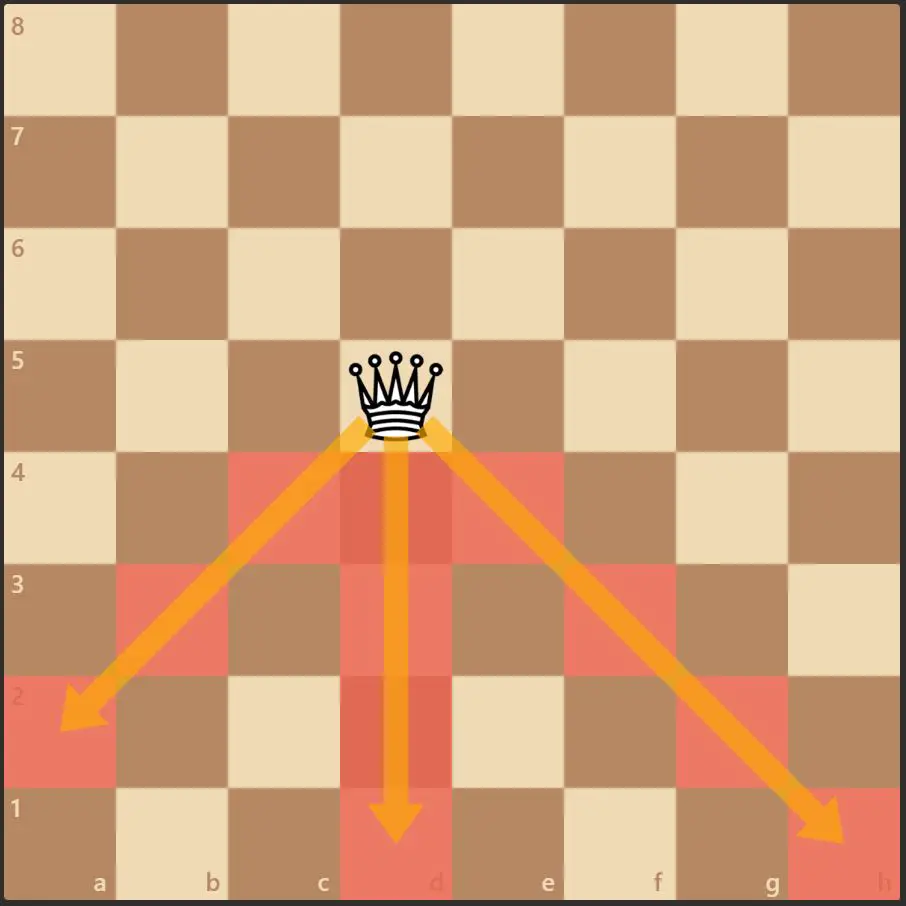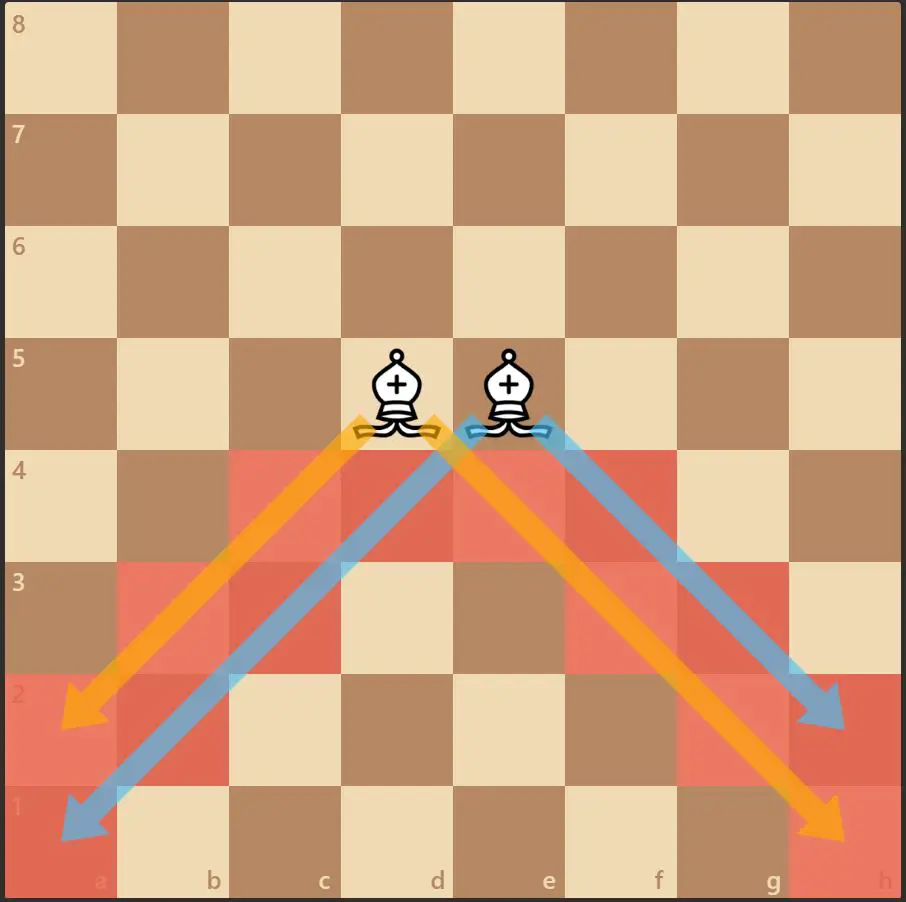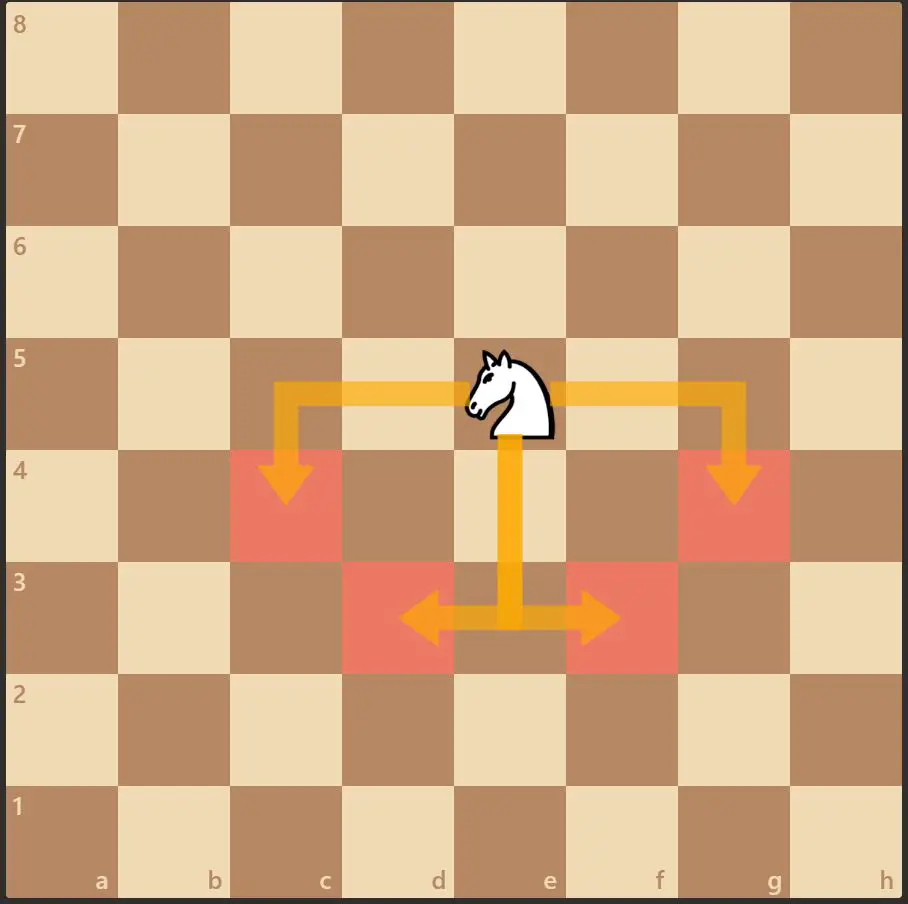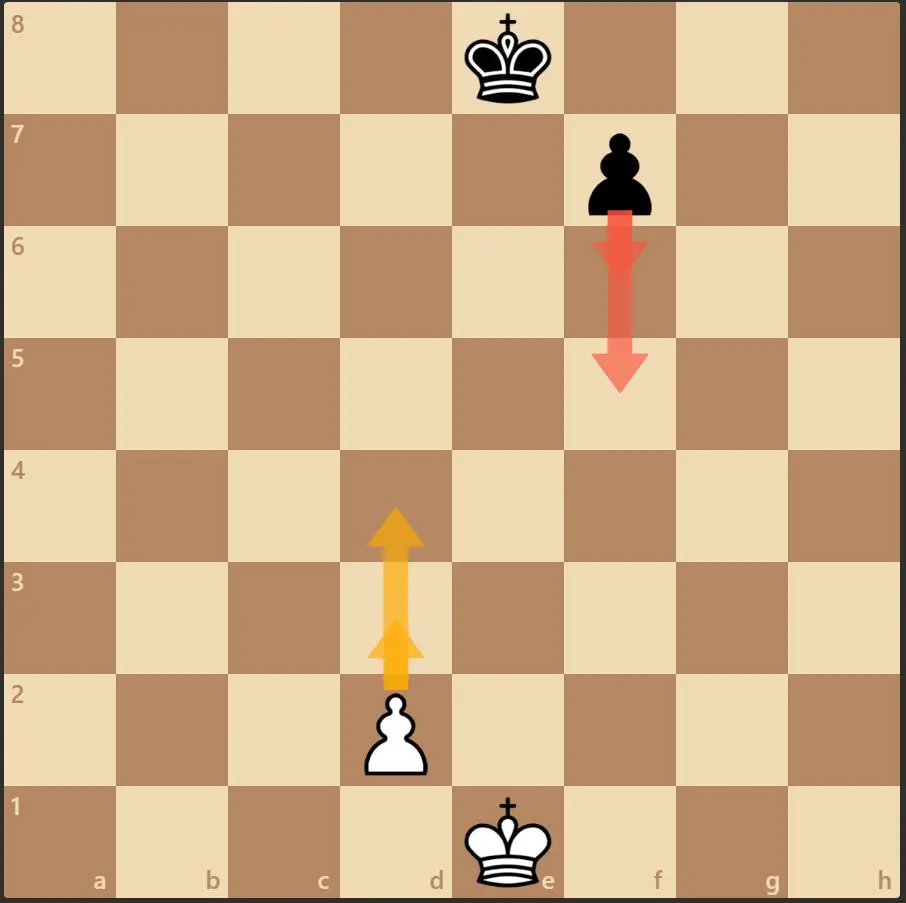Understanding the movement of pieces and chess pieces names is important while learning chess. Many times beginner players usually ask if chess pieces can move backwards
Chess pieces[King, Queen, Rook, Bishop, Knight] can move backwards except for the pawns. This is because pawns can only move 1 or 2 squares at their first move. The rest of the pieces, Bishops, Knights, Rooks, Queen and King can move backwards in the chess game.
Players usually consider moving pieces backwards as a defensive or passive move. If the pieces are under attack it’s good to retreat unless it has better squares to move forward. Here in the article let’s check how various chess pieces move backwards.
Backward Movement Of King
A chess king can only move one square next to it. Therefore chess king can move one square backwards in the chess game. While moving the king backwards make sure that the king is not under any check. King cannot be moved to squares where it has check.
Check the below image that shows the backward squares in which the king can move

Here the king at d5 can move backwards to c4, d4 and e4 squares. As the king can only move one square it can occupy any of these squares.
Usually, the king plays backwards in chess endgames to get opposition over the opponent. During endgames in chess, the king plays a crucial role.
To learn more about chess notations .
.
Backward Movement Of Queen
Queen is considered to be the most powerful piece in the chess game. Queen can move horizontally, vertically and diagonally. Let us understand the backward movement of the queen with the help of a diagram

The queen at d5 can move back to any of the 11 marked in the image.
Backward Movement Of Rook
Similar to the queen, the rook can move vertically and horizontally. Rooks can move vertically backward in the chessboard. The rook is considered to be the second most powerful chess piece. Let’s understand the backward movement of the rook with the help of a diagram

Here as shown in the image the rook at d5 can move to d4, d3, d2 and d1.
Backward Movement Of Bishop
Bishops are the pieces on the chessboard that can only move diagonally. There are 2 bishops for both the white and black sides. Both bishops can move backwards in the chess game. Below images show how the bishops move backward squares

Here we have a light-squared bishop at d5 and dark-squared at e5. Both bishops have 7 backwards squares available. Bishops usually become powerful in open positions.
Backward Movement Of Knight
The knight is the trickiest piece on the chessboard. The knight moves two steps forward and one step sideways in any direction. The image shown below explains the backward movement of the knight

The knight has 4 squares to move. So here the e5 knight can move to c4, d3, f3 and g4.
Can you move Pawns backwards?
Pawns cannot be moved backwards in a chess game. It can only move 1 or 2 squares in the first move, after which pawns move 1 square at a time.

Here you can see the white’s pawn on d2 can either move to d3 or d4. The black’s pawn at f7 can move on f6 or f5 square. If the pawn is moved to forward squares, it cannot be moved backwards.
How many times can chess pieces move backwards?
Chess pieces can move as many times backwards if it has got legal squares to move. There are many occasions in chess where we need to bring the pieces backwards. So there is no limit in the number of backwards moves in chess.
Moving all the pieces backwards without proper planning may result in a passive position. More the pieces are active better the chances of attack. Move the pieces backwards only if:
- The piece is under attack
- the piece can move to a better square
- Another piece can occupy the square of the piece moved
- The position has a tactical play
- To gain opposition
Conclusion
As a chess player, it is important to understand the different chess pieces in detail. All chess pieces can move backwards except the pawn. Never plays any backward moves unnecessarily
